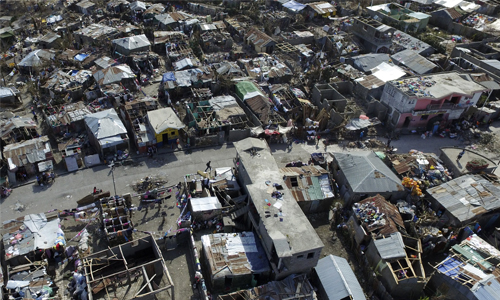Drones help identify post-Hurricane Matthew needs in Haiti
Jérémie : On a football field in the Haitian town of Jeremie, children gather to gape at a drone preparing to take off and document damage to the area caused by Hurricane Matthew.
The powerful storm, which crashed ashore on October 4 packing winds of 145 miles (230 kilometers) per hour, focused its fury on southwestern Haiti where this coastal city of some 31,000 is located.
At least 546 people were killed during the hurricane and more than 175,000 people lost their homes.
Many people in Jeremie are still waiting for help to arrive nearly three weeks later, but relief workers now have a powerful new tool to pinpoint where aide is needed.
Haitians with the group Potentiel 3.0 traveled to Jeremie with a flotilla of four drones to document the damage.
"Before, satellite images could be used" for this purpose, "but the resolution was not perfect," said Presler Jean, who remotely controls one of the drones from his laptop.
"With the drones, one has absolutely all the details of the covered area," he said.
Homes reduced to matchsticks, a building with a blown-off facade or a roof missing two or three shingles: no detail escapes the eye of the drone.
Drones can gather enough information to develop three-dimensional images with precision of four centimeters (1.6 inches) -- a giant leap from the roughly 50-centimeter (19.7 inch) detail provided by satellites.
Thanks to drone imagery, engineers were able to quickly repair Jeremie's storm damaged harbor, allowing the first aid ship to dock 72 hours after the hurricane hit, said Fred Moine, head of the volunteer group.
Within just a few hours, "Heavy machine operators knew exactly how much sand was needed" for harbor repairs, he said.
Related Posts


